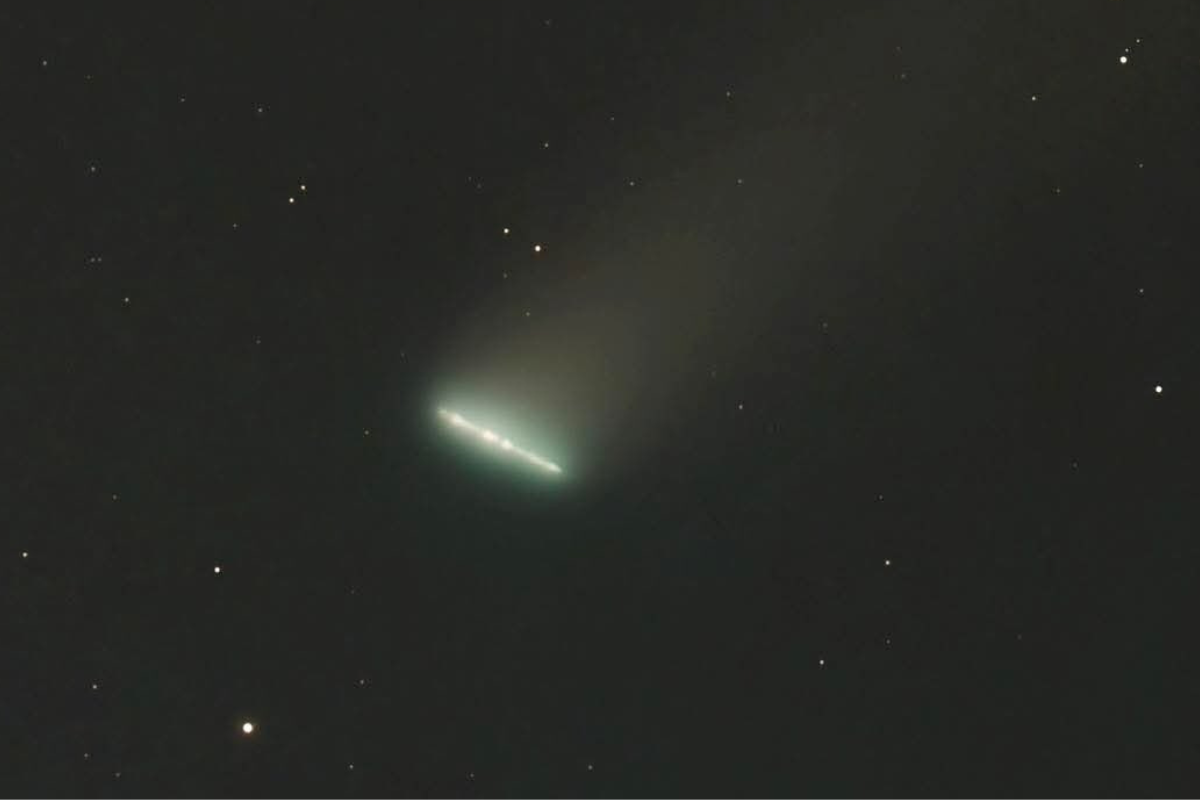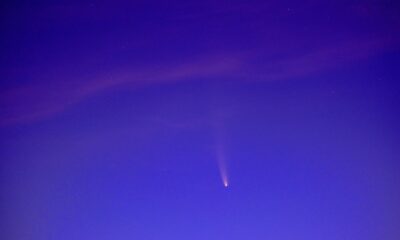Science
Astronomers Stunned by Comet 3I/ATLAS’s Unique Radio Signal

On October 24, 2025, astronomers received an unexpected signal from the interstellar comet 3I/ATLAS while utilizing South Africa’s MeerKAT radio telescope. This comet produced a narrow-band hydroxyl absorption at frequencies of 1665 and 1667 MHz, a region commonly referred to as the “water hole.” This area of the radio spectrum has long been a focal point in the search for extraterrestrial intelligence, yet no comet has previously exhibited such a distinctive signature.
Rare Radio Detection Raises Questions
Historically, radio detections of comets are infrequent, with only about twenty confirmed cases over the past fifty years. Notable comets such as Kohoutek, Hale–Bopp, Hyakutake, NEOWISE, and Halley’s Comet have all been documented through radio observations. Typically, these detections arise from natural phenomena, including microwave emissions from hydroxyl radicals or thermal noise from the cometary comae. The Rosetta mission expanded the knowledge of cometary behavior by directly measuring comet 67P/Churyumov–Gerasimenko. However, none of these cases displayed the narrow-band absorption signature seen with 3I/ATLAS.
The emission of hydroxyl radicals typically occurs when comets near the Sun, increasing their activity as they heat up. In a surprising twist, 3I/ATLAS recorded absorption at these same frequencies just days before its perihelion. This unexpected behavior challenges established cometary physics and raises intriguing questions about the nature of the signal.
Comparative Analysis with Previous Interstellar Objects
Unlike prior interstellar visitors, such as 1I/ʻOumuamua and 2I/Borisov, which did not produce any notable radio anomalies, 3I/ATLAS stands out by generating a narrow-band absorption pattern at frequencies historically associated with potential communication. Traditional comets tend to produce broad and noisy signals, making this case particularly distinct. For scientists, this anomaly could either signify the most unusual natural comet ever observed or hint at something more advanced, potentially involving interstellar technology.
Following a close encounter with the Sun, 3I/ATLAS emerged intact—a feat that defies expectations for natural comets. As researchers analyze the data, they are calling for transparency from agencies such as NASA, JPL, and the Planetary Defense Coordination Office. They urge these organizations to release all available data, including spectra and high-resolution images. This demand for openness reflects the scientific community’s desire to understand whether humanity is witnessing a new phenomenon in cosmic behavior.
As excitement builds, December 19, 2025, has become a critical date for scientists. Observers are eager to determine if the water hole frequencies will remain silent or if the signal will repeat. If the signal does reoccur, it could represent a groundbreaking discovery in planetary science. Regardless of the outcome, 3I/ATLAS has already expanded the boundaries of what astronomers believed was possible, continuing to intrigue and inspire the astronomical community.
-

 Entertainment2 months ago
Entertainment2 months agoAnn Ming Reflects on ITV’s ‘I Fought the Law’ Drama
-

 Entertainment4 months ago
Entertainment4 months agoKate Garraway Sells £2 Million Home Amid Financial Struggles
-

 Health2 months ago
Health2 months agoKatie Price Faces New Health Concerns After Cancer Symptoms Resurface
-

 Entertainment2 months ago
Entertainment2 months agoCoronation Street’s Carl Webster Faces Trouble with New Affairs
-

 Entertainment2 months ago
Entertainment2 months agoWhere is Tinder Swindler Simon Leviev? Latest Updates Revealed
-

 Entertainment3 months ago
Entertainment3 months agoKim Cattrall Posts Cryptic Message After HBO’s Sequel Cancellation
-

 Science4 weeks ago
Science4 weeks agoBrian Cox Addresses Claims of Alien Probe in 3I/ATLAS Discovery
-

 Entertainment3 months ago
Entertainment3 months agoMarkiplier Addresses AI Controversy During Livestream Response
-

 Entertainment2 months ago
Entertainment2 months agoOlivia Attwood Opens Up About Fallout with Former Best Friend
-

 Entertainment3 months ago
Entertainment3 months agoMasterChef Faces Turmoil as Tom Kerridge Withdraws from Hosting Role
-

 Entertainment4 months ago
Entertainment4 months agoSpeculation Surrounds Home and Away as Cast Departures Mount
-

 World2 months ago
World2 months agoCole Palmer’s Mysterious Message to Kobbie Mainoo Sparks Speculation





















